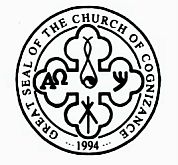{THUMBDIV(align=>right, width=>130px, imgid=>38, title=>Haoma is the plant of eternal life, it is but natural that one of his priests should have been the first healer., alt=>Haoma is the plant of eternal life, it is but natural that one of his priests should have been the first healer., thumbwidth=>45, thumbheight=>82)}"Haoma is the plant of eternal life, it is but natural that one of his priests should have been the first healer." Page image from Sacred Books of the East Vol. IV, The Zend Avesta (1895){THUMBDIV} This Thrita is mentioned only once again in the Avesta, in Yasna IX, 7, where he appears to have been one of the first priest of Haoma. This accounts for his medical skill; as Haoma is the plant of eternal life. it is but natural that one of his first priest should have been the first healer.
This Fargard has only an allusion to the origin of the knife-medicine, which was, as it seems, reveal by Khshathra Vairya (para. 3). The last paragraphs (5-12) deal with the spell-medicine.
The functions ascribed here to Thrita were sometimes conferred on his semi-namesake Thraêtaona(1). Hamza makes Thraêtaona the inventor of medicine(2); the Tavîds(3) against sickness are inscribed with his name, and we find in the Avesta itself his Fravashi invoked 'against itch, hot fever, humours, cold fever(4), incontinence, against the plagues created by the serpent(5).' We see from the last words of this passge that disease was understood as coming from the serpent; in other words, that it was considered a sort of poisoning(6), and this is the reason why the killer of the serpent (Azi Dahâka) was invoked to act against it.
I. Zarathrusta asked Ahura Mazda: 'Ahura Mazda, most beneficent Spirit, Maker of the material world thou Holy One! Who was he who first of the healers(7), of the wise, the happy, the wealthy, the glorious, the strong, the Paradhâtas(8), drove back sickness to sickness, drove back death to death(9); and first turned away the point of -next - page 227-
- 1 See the Westergaard Fragments, II.
- 2 Ed. Gottwaldt, p. 23; cf. Mirkhond, Early Kings of Persia, tr. by Shea, p. 152.
- 3 Formulas of exorcism.
- 4 Cf. Farg. VII, 58.
- 5 Yasht XIII, 131.
- 6 This theory, which modern science would not utterly reject, accounts for the great part which the serpent plays in the worship of Asklepios; as sickness comes from him, from him too must or may come healing.
- 7 'Those who knew how to take care of their own bodies, like Isfandyâr: some say that no sword could wound him' (Comm.)
- 8 The Paradâta or Pêshdâd, the kings of the first Iranian dynasty.
- 9 'That is to say, who kept sickness in bonds, who kept death in bonds' (Comm.)
